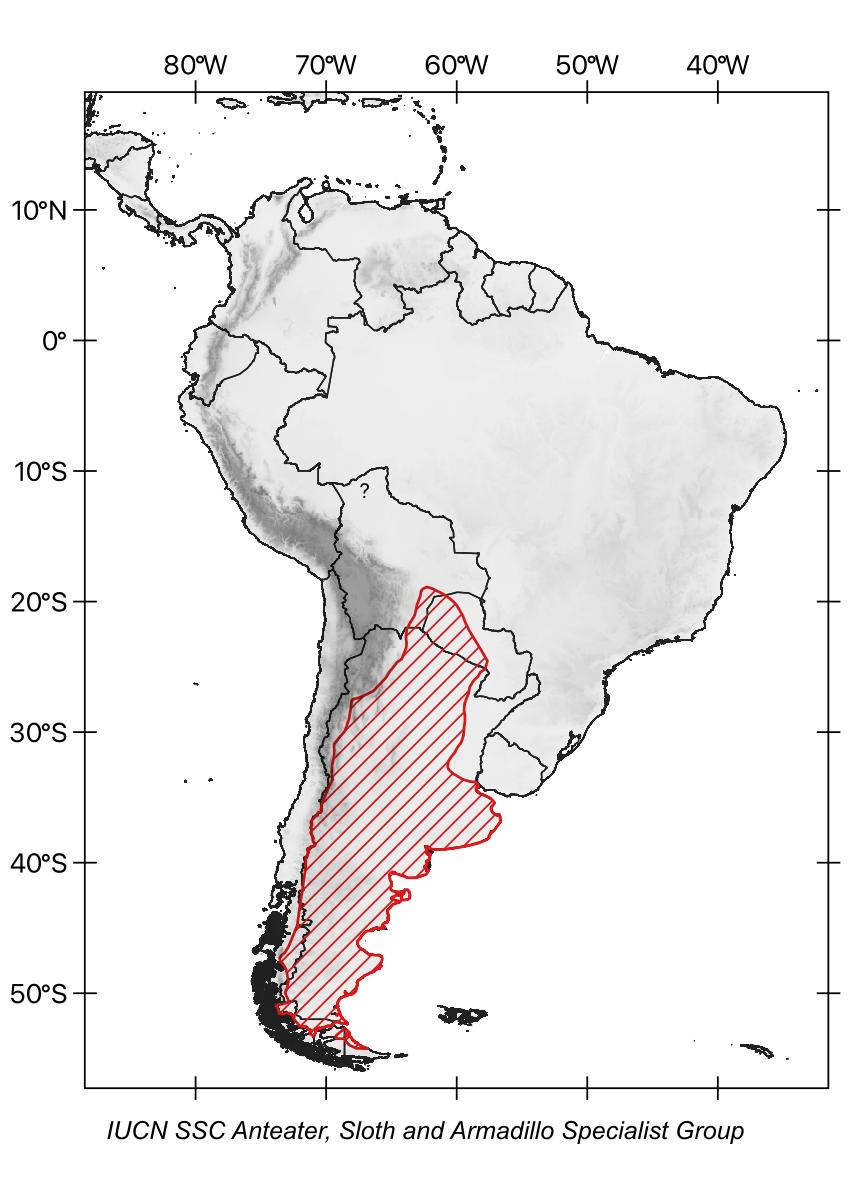Large hairy armadillo
(Chaetophractus villosus)
other common names
–
Taxonomy
Order: Cingulata
Family: Chlamyphoridae
Subfamily: Euphractinae


description
Chaetophractus villosus has a head-body length of 26–40 cm, a tail of 12–15 cm, and proportionally short ears that are about 3 cm long. It weighs 2–5 kg. The carapace is flattened and dark, with long, sparse dark hair and 6–7 transverse bands. There are 2–3 small openings for pelvic glands in the midline of the pelvic shield.

range
Large hairy armadillos can be found in southeastern Bolivia, most of Paraguay and Argentina, and southern Chile. It has been introduced on Tierra del Fuego island.

HaBITAT and ECOLOGy
Chaetophractus villosus is present in a wide variety of habitats, among them grasslands (including pampas and Chaco), savanna, and forest. It is also frequently found in agricultural lands of the Argentinean pampas.
This is one of the most common armadillo species in Argentina. In some parts of its range, the subpopulations seem to be increasing, and it is sometimes considered a pest in croplands.

reproduction
Large hairy armadillos become sexually mature at about 1 year of age. Mating is seasonal and occurs from the end of winter throughout spring. After a gestation of 60–75 days, 1–3 (usually 2) offspring are born inside the burrow, which are weaned at 2 months of age. In favorable conditions, females can produce more than one litter per year.

diet
This species has omnivorous-carnivorous habits. It eats invertebrates (mainly beetle adults and larvae), plant material (especially fruits), small vertebrates, bird eggs, and carrion.

curious facts
This species commonly uses man-made landfills and composting sites.

threats
In some parts of its range, C. villosus is used for food and to make charangos (musical instruments). It is also persecuted as a pest species in agricultural areas, and is subjected to sport hunting. Animals may also be killed on roads and by dogs. In addition, devastating wildfires swept across Bolivia every year since 2019, resulting in the burning of several armadillo species, according to unpublished government data.

Population trend
Stable.

conservation status
Chaetophractus villosus is listed as Least Concern in view of its wide distribution, presumed large population, its presence in a number of protected areas, its tolerance of a degree of habitat modification, and because it is unlikely to be declining fast enough to qualify for listing in a threatened category.